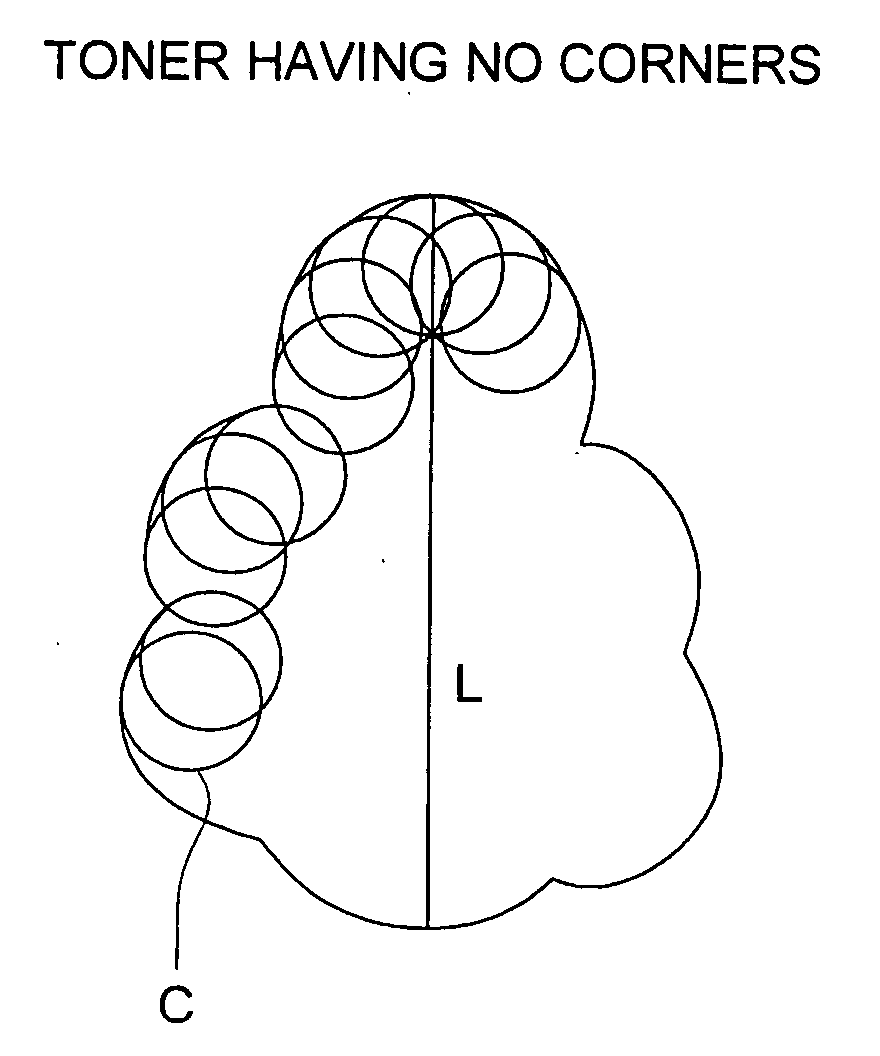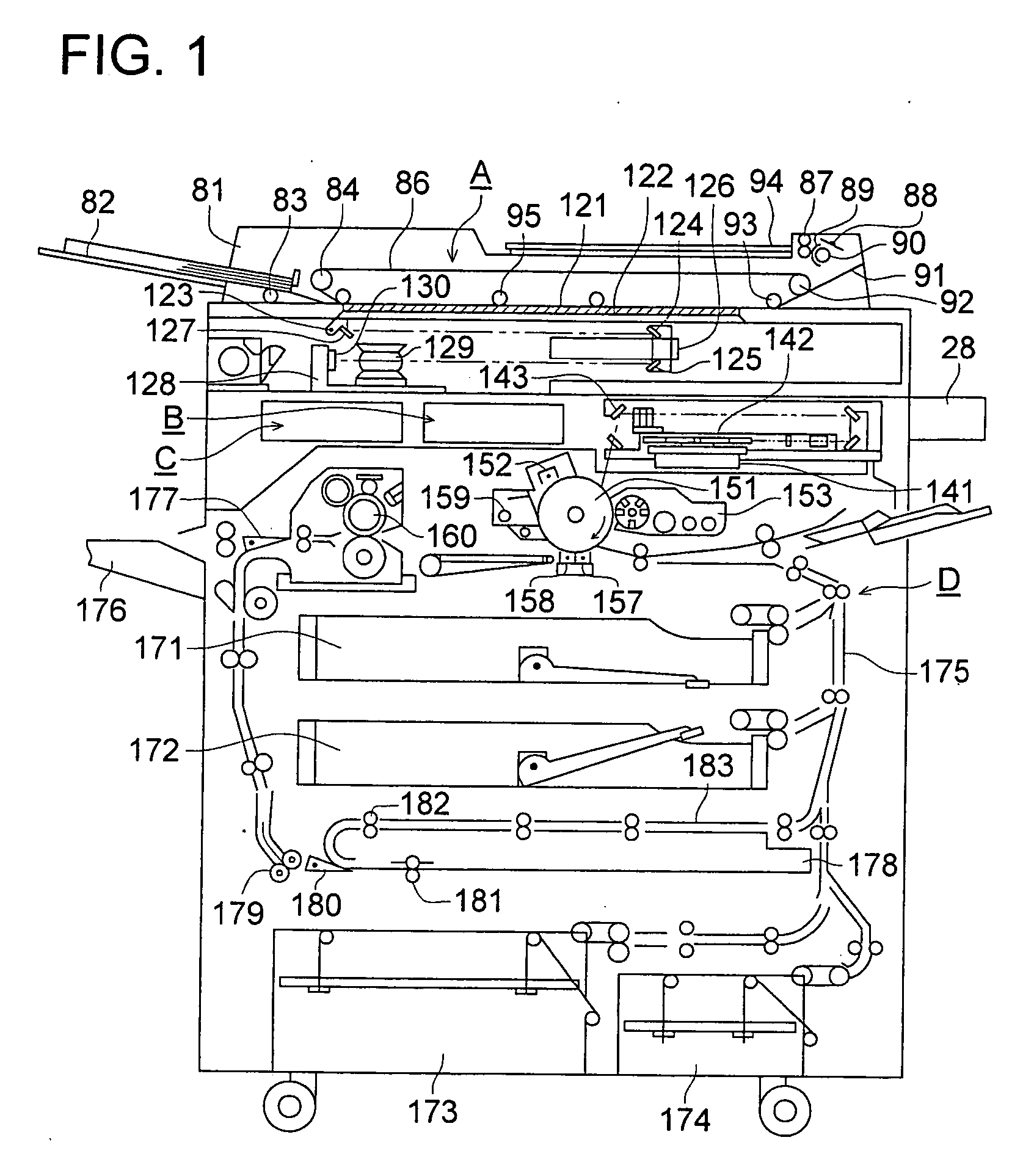Organic photoreceptor and image forming method
a photoreceptor and organic technology, applied in the field of organic photoreceptors, can solve the problems of insufficiently minimizing the generation of black spots, difficult to achieve sufficient image density, and affecting the image quality of the image, and achieve excellent potential stability
- Summary
- Abstract
- Description
- Claims
- Application Information
AI Technical Summary
Benefits of technology
Problems solved by technology
Method used
Image
Examples
example 1
Synthesis Example 1 (Synthesis Example of Exemplified Compound T83)
Dissolved in 40 ml of dimethylformamide were 10 g of the compound represented by the aforesaid formula, and the resulting solution was heated to 40° C. Subsequently, 9.2 g of phosphorous oxychloride were gradually added dropwise (the temperature of the resulting mixture increased to the range between 40 and 70° C. due to heat generation). The reaction composition was stirred for 3 hours while maintaining the temperature at about 70° C. After cooled to 40° C., any excessive phosphorous oxychloride sufficiently underwent hydrolysis and deposited crystals were separated by filtration. The resultant crystals were washed while suspended in water and washing was repeated until the washing water became neutral, whereby 9.25 g (85 percent) bisformyl compound, represented by the structural formula described below, were prepared.
Dissolved in 50 ml of tetrahydrofuran were 4 g of bisformyl compound prepared as above and 9.3...
example 2
Synthesis Example 2 (Synthesis Example of Exemplified Compound T74)
Charged into a four-necked flask fitted with a cooling pipe and a thermometer under a flow of N2 gas were 20 g of the aforesaid 4-methoxytriphenylamine, 32 g of dimethylformamide, and 80 ml of toluene, and the resulting mixture was mixed. While keeping at 60 to 70° C., 76.02 g of phosphorus trichloride were gradually dripped. Thereafter, the resulting mixture underwent reaction at approximately 70° C. for 20 hours. After the reaction, the inner temperature was decreased to approximately 50° C., and subsequently, 500 ml of water at 60 to 70° C. was gradually dripped (attention was paid so that the inner temperature did not exceed 70° C.). After stirring for one hour, 400 ml of toluene were added and washing was carried out until the resulting washing water became neutral in pH. After concentration, recrystallization was performed employing isopropyl alcohol, whereby 16.46 g (64 percent) of 4,4′-diformyl-4″-methoxyph...
example 3
Synthesis Example 3 (Synthesis Example of Exemplified Compound T20)
Dissolved in 32 g of phosphorus oxychloride were 10 g of the compound represent by the formula described above, and the resulting solution was heated to 50° C. Subsequently, 22 ml of dimethylformamide were gradually dripped (the temperature of the resulting mixture increased between 40 and 70° C. due to heat generation). The reaction composition was stirred for 15 hours while controlling the temperature at approximately 90° C. After the temperature was allowed to lower itself to 40° C., the residual phosphorus oxychloride was completely hydrolyzed, and deposited crystals were collected through filtration and then suspended in water. The collected crystals were washed with water while suspended and washing was repeated until the resulting washing water became neutral in pH, whereby 9.25 g (77 percent) of the bisformyl compound represented by the structural formula described below was obtained.
Dissolved in 20 ml o...
PUM
 Login to View More
Login to View More Abstract
Description
Claims
Application Information
 Login to View More
Login to View More - R&D
- Intellectual Property
- Life Sciences
- Materials
- Tech Scout
- Unparalleled Data Quality
- Higher Quality Content
- 60% Fewer Hallucinations
Browse by: Latest US Patents, China's latest patents, Technical Efficacy Thesaurus, Application Domain, Technology Topic, Popular Technical Reports.
© 2025 PatSnap. All rights reserved.Legal|Privacy policy|Modern Slavery Act Transparency Statement|Sitemap|About US| Contact US: help@patsnap.com



